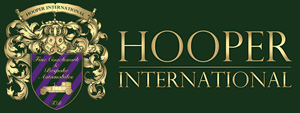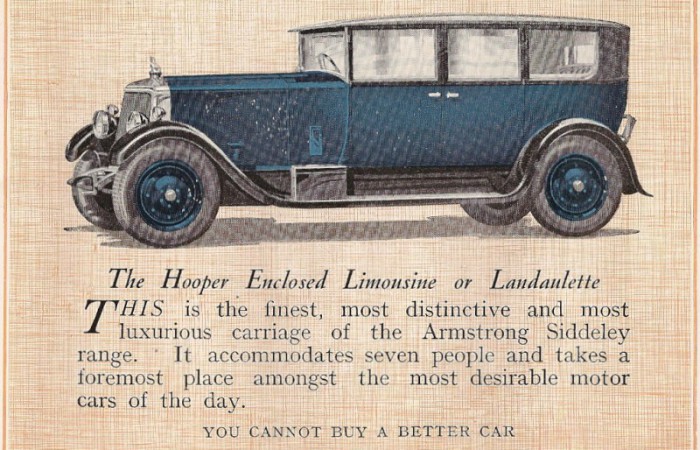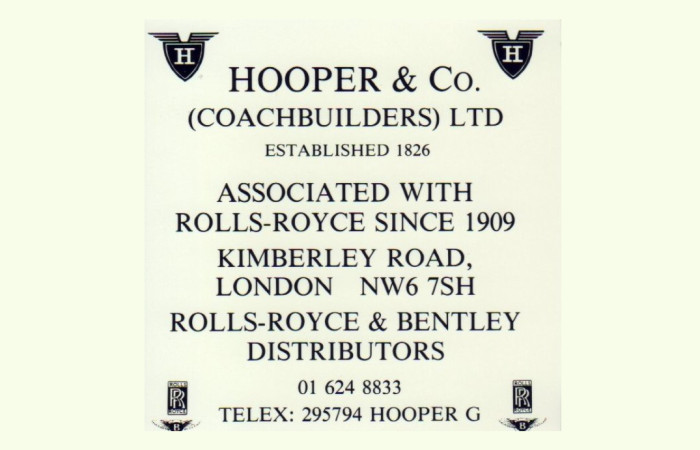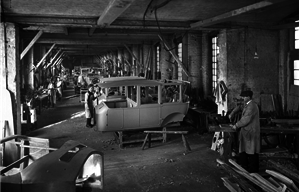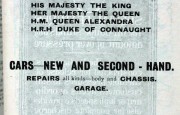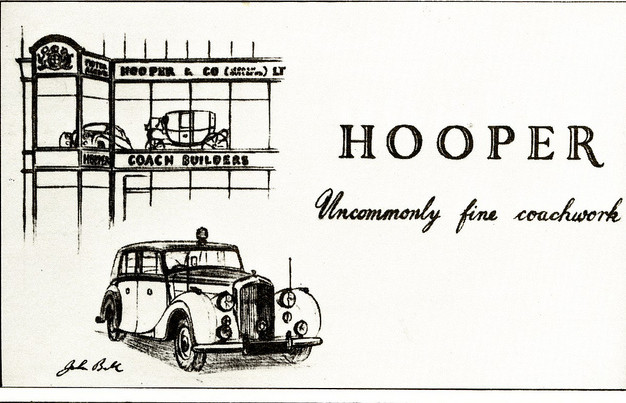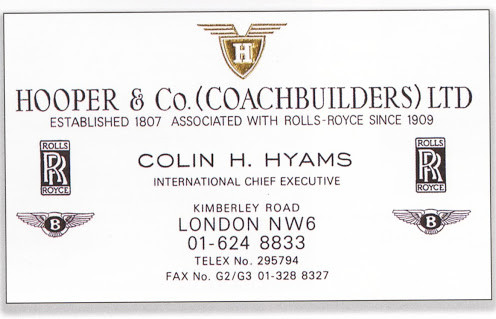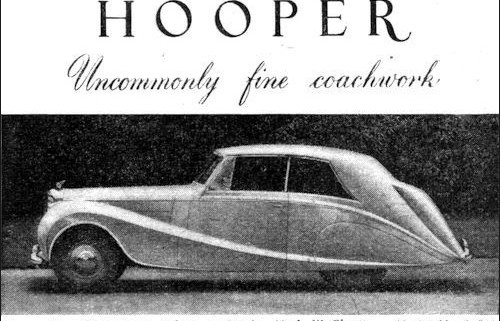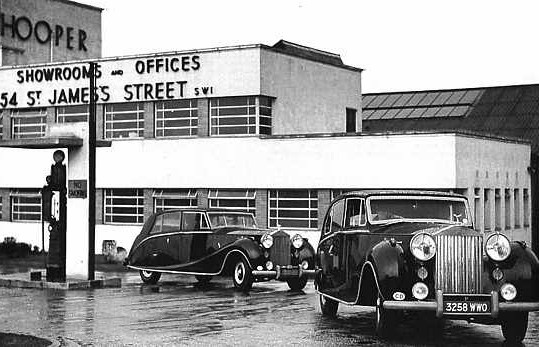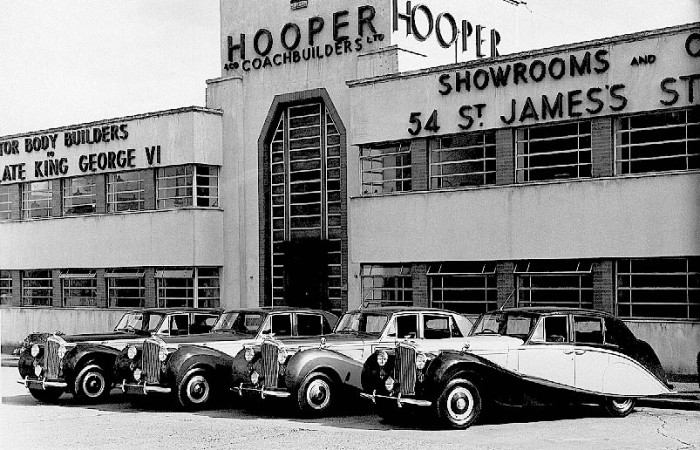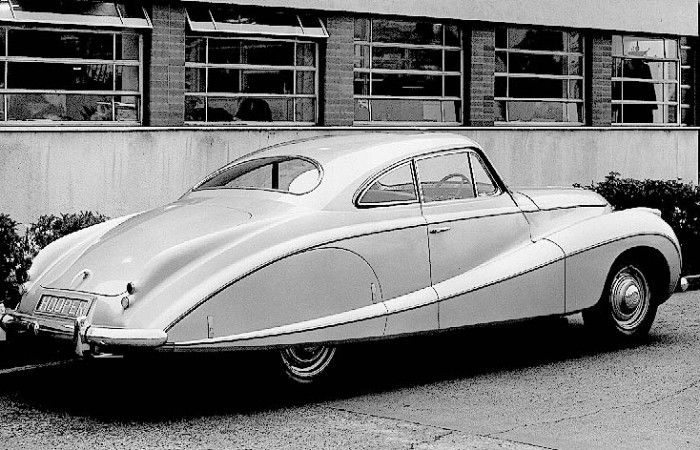Hooper & Co. was a British coachbuilding company based in Westminster London. From 1805 to 1959 it was a notably successful maker, to special order, of luxury carriages both horse-drawn and motor-powered. The company was founded as Adams and Hooper in 1805 and held a royal warrant from 1830, building elegant horse-drawn carriages, supplying them to King William IV, Queen Victoria and King Edward VII. They moved into motor bodies at the turn of the 20th century.
The first royal car, a Hooper body on a Daimler chassis, was delivered to Sandringham on 28 March 1900. It was painted chocolate brown with red lines; a livery which continued for the royal family well into the twentieth century.
Hooper specialized in the very top tier of the market, building the most luxurious bodies possible without consideration of cost. The models were not sporty, as the company specialized in stately, elegant carriages.
During World War I, Hooper turned to aircraft manufacture, eventually producing Sopwith Camels at the rate of three a day. With peace, the firm returned to coachbuilding. They weathered the Great Depression of the 1930s far better than most coachbuilders, even building a second factory in Acton, West London. In the peak year of 1936, more than 300 bodies were built.
In 1938 Hooper acquired rivals Barker who were in receivership. Barker retained its separate identity.
Hooper was acquired by The Daimler Company in 1940, becoming part of the BSA industrial group.
Hooper’s management decided to end production of coachbuilt bodies after Rolls-Royce’s plans to cease series production of
separate-chassis cars and use monocoque construction exclusively became known to them in 1958. Their showroom at St. James’s Street closed down at the end of September that year.
In the 1980’s the revived Hooper & Co. used the Silver Shadow and Silver Spirit “SZ-series”bodies to produce custom two-door coupés and 4-door limousines, creating with the Hooper Empress the epitome of luxurious motoring of those days.
Around the millennium Hooper International was shortly re-established as manufacturer of Mercedes 300 SL “Gullwing” and Roadster cars on the Isle of Jersey. With a for the market of that time to dear production it was decided soon afterwards to sell the company to an enterprise in the United Arab Emirates, were it was “en mode” to establish small scale production of exclusive cars. Lacking skills of effective manufacturing and coachbuilding of small series of cars the owners decided to sell it to the Peja Group of companies shortly afterwards.
The first royal car, a Hooper body on a Daimler chassis, was delivered to Sandringham on 28 March 1900. It was painted chocolate brown with red lines; a livery which continued for the royal family well into the twentieth century.
Hooper specialized in the very top tier of the market, building the most luxurious bodies possible without consideration of cost. The models were not sporty, as the company specialized in stately, elegant carriages.
During World War I, Hooper turned to aircraft manufacture, eventually producing Sopwith Camels at the rate of three a day. With peace, the firm returned to coachbuilding. They weathered the Great Depression of the 1930s far better than most coachbuilders, even building a second factory in Acton, West London. In the peak year of 1936, more than 300 bodies were built.
The activities of Hooper today can be summarized as: Coachbuilding, Restaurations, Upholstery and hoods, Rallye preparation, Maintenance, Collection & Museum
